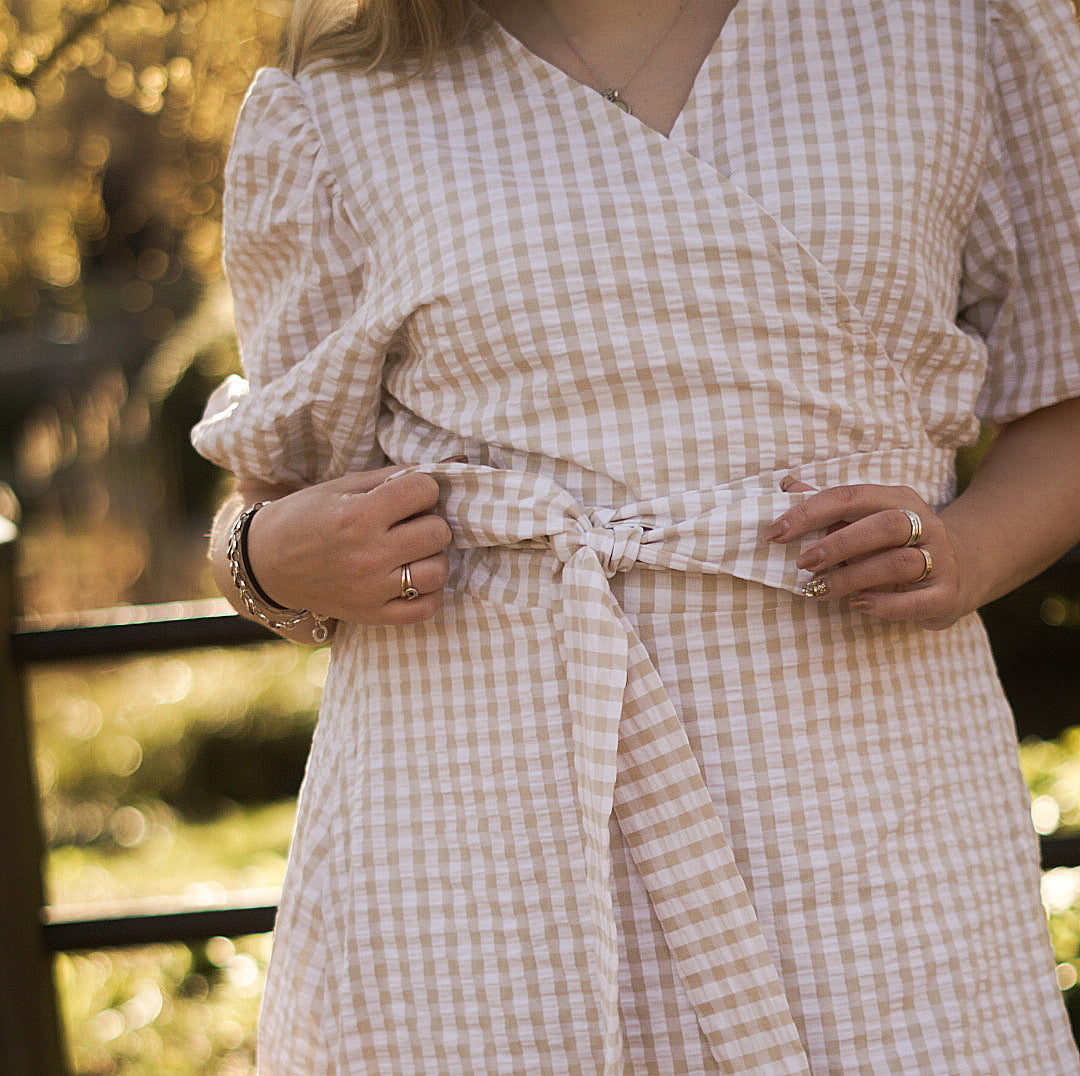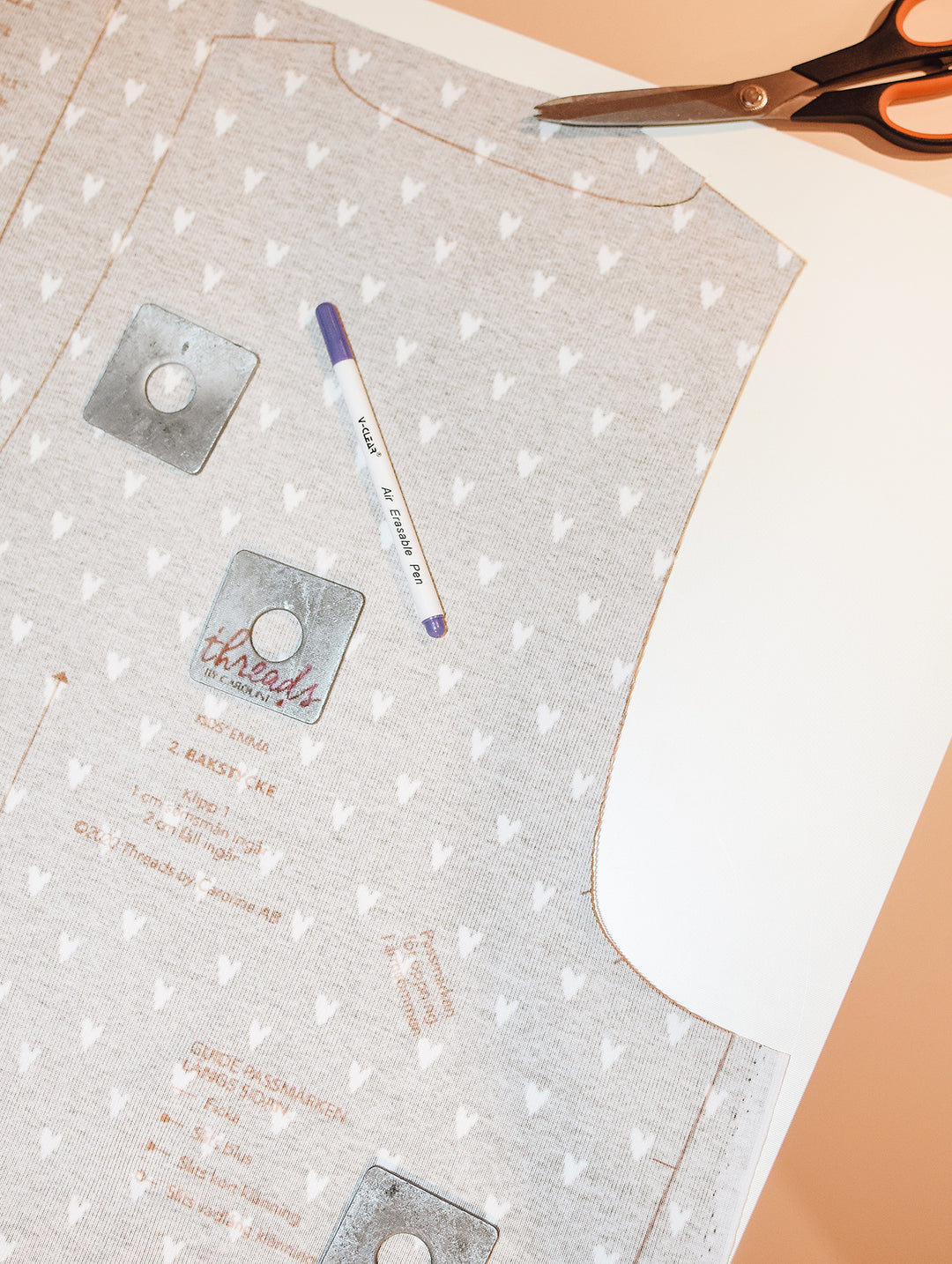Our jacket pattern Wilma & Wide is designed primarily for fleece fabrics, so here's everything you need to know about sewing in fleece fabrics!
(Oh, and don't forget the fabric and materials requirements chart, as well as the size chart if you're eager to gather your supplies).

MATERIALS AND WEIGHT
Fleece is a fabric with one or both sides brushed for a softer texture. Fleece can be made from for example polyester (a synthetic material), cotton or wool (natural materials), or a mix of polyester and cotton, and sometimes other materials as well. If you’re looking for organic fabrics, there are fleece fabrics made from reused materials, and fleece fabrics made from organic cotton.
The so called micro fleece is generally lighter, often weighing around 200 gr/m2. Polar fleece is heavier and warmer, with a weight around 400 gr/m2. Some fleece fabrics have specific characteristics, such as water repellent fleece and anti-pilling fleece.
When we constructed this sewing pattern we used fleece fabrics made of polyester and/or cotton, with a weight around 300 gr/m2.
CUTTING YOUR FABRIC
It’s important to identify the right side/wrong side, as well as the grainline, and in this case the nap direction. Most fleece fabrics aren't woven and therefore have no real grainline, but you should still follow what would be the grainline, i.e. the same direction as the selvage. It’s important to get the stretch in the right direction, horizontally.
Fleece is more or less napped, and we strongly recommend that you cut all pattern pieces in the same nap direction. Stroke the fabric with your hands to see in which the direction the nap goes, it’s usually downwards.
Tip! While you’re cutting out the pattern pieces use a marker or similar to mark nap direction and right sides so that when it’s time to sew you won’t be confused about it.
The right side can be identified by grabbing the fabric with both hands and stretching it out. The edge of the fabric will bend to the wrong side.
SEWING
A universal needle is most often recommended for fleece fabrics, sometimes also ballpoint or microtex needles. General guidelines for needle size are: 70/10 for light-weight fleece; 80/12 or 90/14 for medium-weight fleece; 100/16 for heavy weight fleece. During some steps of sewing the jacket, you'll sew through many layers so be prepared with a large size needle.
Use a straight stitch or zig zag stitch with longer stitch length, approx. 3-5 mm. A short stitch length can distort and stretch out your fabric. Use a serger if you have one, it’s very suitable for fleece.
Try lowering the presser foot tension if you struggle with sewing in fleece.
Be careful when pressing with an iron, the heat can melt the fabric. Use a pressing cloth and press carefully. If your fabric can’t be pressed with an iron, press with your fingers instead.
Fleece won’t fray so you don’t have to finish seam allowances.

Keep following us on Instagram, Facebook or our Newsletter for updates on new blog posts and patterns.





